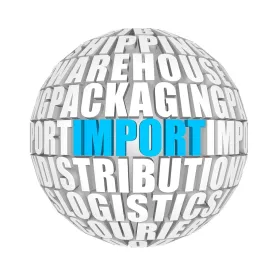GEO Specialty Chemicals, Inc., and Chattem Chemicals, Inc. (“petitioners”), on March 28, 2018, filed antidumping (AD) and countervailing duty (CVD) petitions on glycine from China (CVD only), India (AD & CVD), Japan (AD only) and Thailand (AD & CVD).
The U.S. AD law imposes special tariffs to counteract imports that are sold in the United States at less than “normal value.” The U.S. CVD law imposes special tariffs to counteract imports that are sold in the United States with the benefit of foreign government subsidies. For AD/CVD duties to be imposed, the U.S. government must determine not only that dumping and/or subsidies are occurring, but also that there is “material injury” (or threat thereof) by reason of the dumped and/or subsidized imports. Importers are liable for any potential AD/CVD duties imposed. In addition, these investigations could impact purchasers by increasing prices and/or decreasing supply of glycine.
Scope
The merchandise covered by this investigation is glycine, which in its solid (i.e., crystallized) form is a free-flowing crystalline material, like salt or sugar. Glycine is produced at varying levels of purity or grades. It is used as a sweetener/taste enhancer, buffering agent, cleaning and polishing agent, reabsorbable amino acid, chemical intermediate, metal complexing agent, and dietary supplement. It also has other pharmaceutical, industrial, medical and cosmetic applications. The scope of this investigation covers glycine in any form and at any purity level or grade, regardless of additives. Glycine’s chemical composition is C2H5NO2 and is classified, since July 1, 2017, under subheading 2922.49.43.00 of the Harmonized Tariff Schedule of the United States (“HTSUS”); before that date, it was classified under subheading 2922.49.40.20 of the HTSUS.
The scope of this investigation also covers precursors of dried crystalline glycine, including, but not limited to, glycine slurry (i.e., glycine in a non-crystallized form), sodium glycinate and a non-reacted ammonia-monochloroacetic or chloroacetic acid mix. Glycine slurry is classified under the same HTSUS as crystallized glycine (2922.49.43.00 as of July 1, 2017, and 2922.40.40.20 before that date), sodium glycinate is classified under HTSUS 2922.49.80.00, and the non-reacted ammonia-monochloroacetic or chloroacetic acid mix has been classified under a number of HTSUS 2922.49 subheadings. Because HTSUS subheadings are provided for convenience and Customs purposes, our written description of the scope of this investigation is dispositive.
Alleged Dumping and Subsidy Margins
The petitioners allege dumping margins as follows:
- India – 77.62 percent
- Japan – 516.05 percent
- Thailand – 207.24 percent
No specific subsidy margins were alleged.
Estimated Schedule of Investigations
- March 28, 2018 – Petition is filed
- April 17, 2018 – DOC initiates investigation
- April 18, 2018 – ITC staff conference
- May 14, 2018 – Deadline for ITC preliminary injury determinations
- June 21, 2018 – Deadline for DOC preliminary CVD determination, if not postponed
- August 27, 2018 – Deadline for DOC preliminary CVD determination, if fully postponed
- September 5, 2018 – Deadline for DOC preliminary AD determination, if not postponed
- October 24, 2018 – Deadline for DOC preliminary AD determination, if fully postponed
- March 8, 2019 – Deadline for DOC final AD and CVD determinations, if both preliminary and final AD determination deadlines are fully postponed
- April 22, 2019 – Deadline for ITC final injury determinations, assuming fully postponed DOC deadlines





 />i
/>i
